Dark Skies and Emerging Technology Conference, Part 2
Posted: 24 August 2014
Day 2, Tuesday, 19 August 2014
The Conference began early on Tuesday at the High Country Conference Center. As attendees entered the hall they saw this display showing the sponsors of the conference:
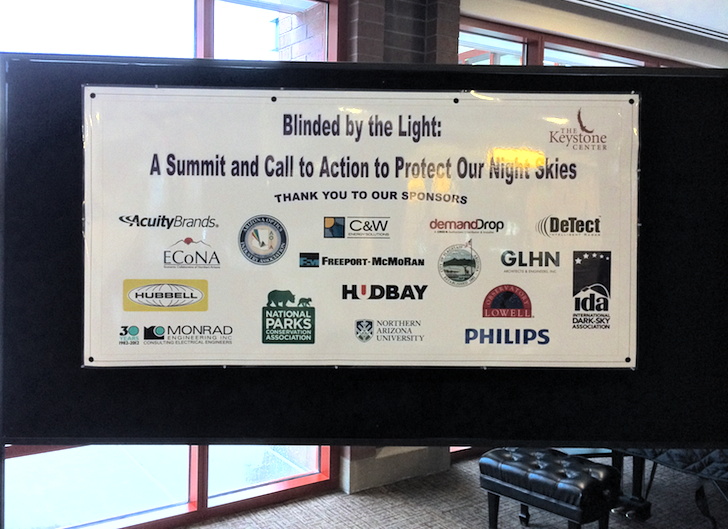
Welcomes and presentations started off the day's events. Here are some of the conference attendees:
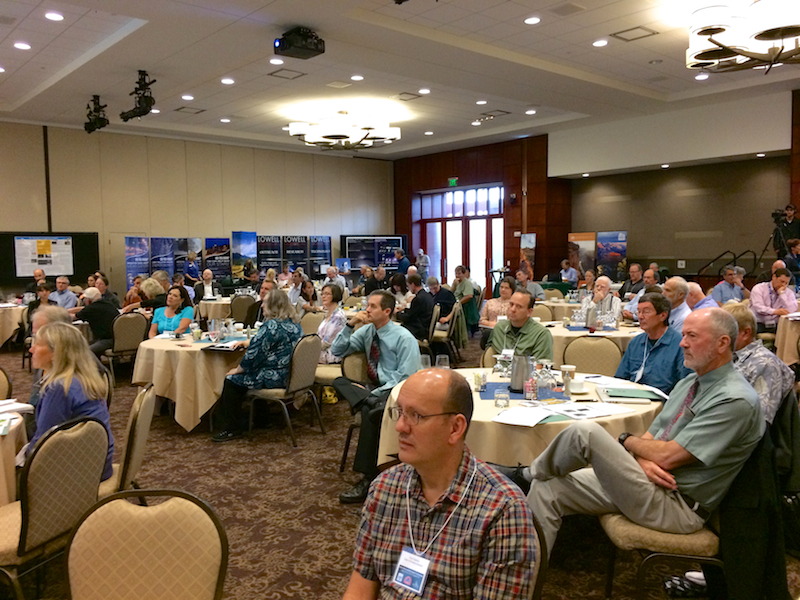
Following the presentations, a panel kicked off the discussion portion of the conference that would consume most of the remaining time for the two days. I had been invited to be a panelist; that's me fourth from the right side of the photo:
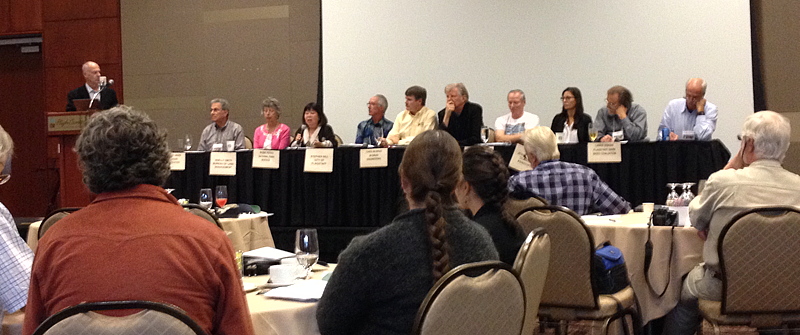
(photo by Scott Kardel, IDA)
Here's the view of the audience from my panel position:
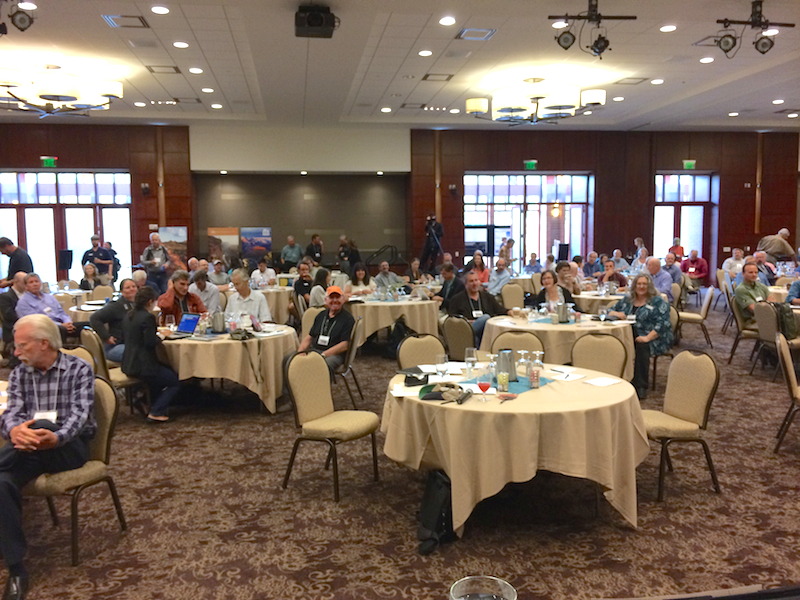
After a long day of discussions, with excellent participation by the audience and panelists, the conference continued that night with a 90 minute tour of some of Flagstaff's street and parking lot lighting hosted by Flagstaff lighting engineers. Here is the old style Low Pressure Sodium (LPS) lighting (good light but very high maintenance):
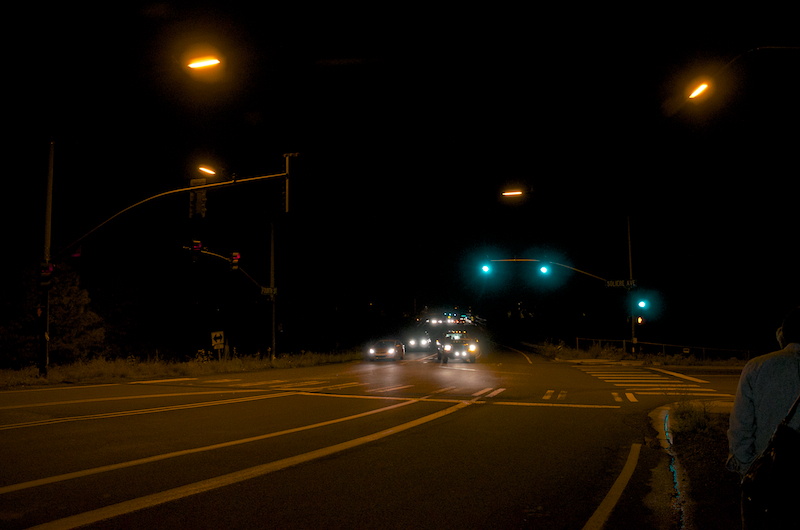
This is white (blue) LED (energy efficient but actually bad lighting and as it turns out, high maintenance):
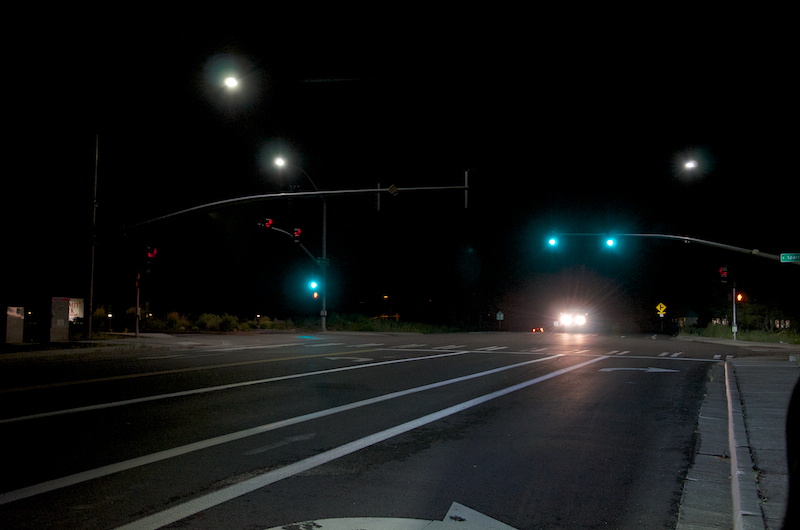
Narrowband Amber (good but not the best, energy efficient and low maintenance):
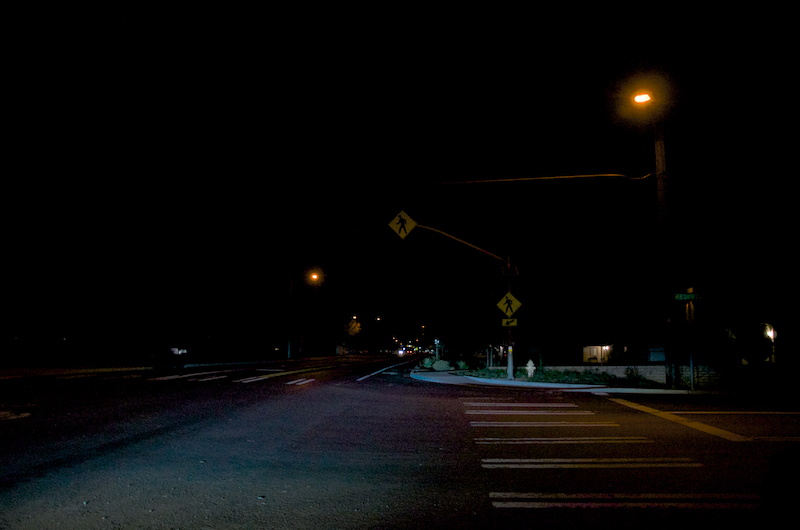
This lighting was an experiment (that failed). This is the color of the lighting, unedited:
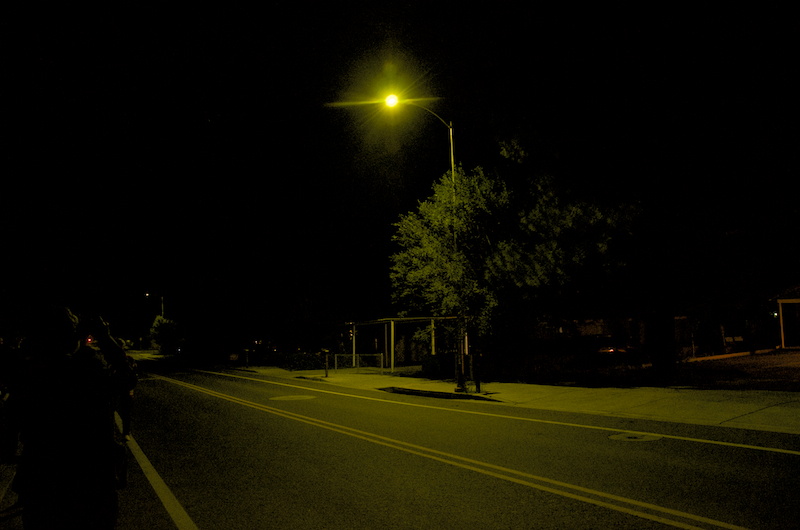
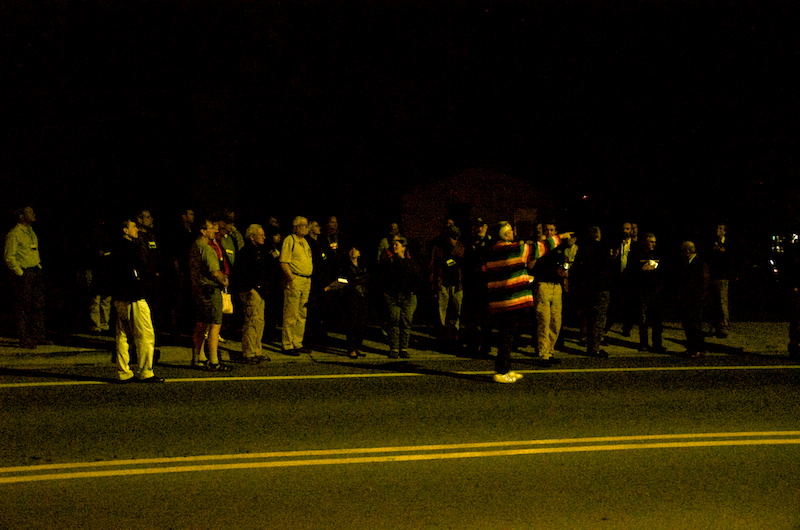
Here are close-up photos of white LED and Narrowband LED lighting:
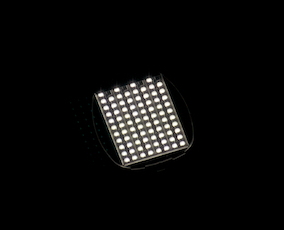
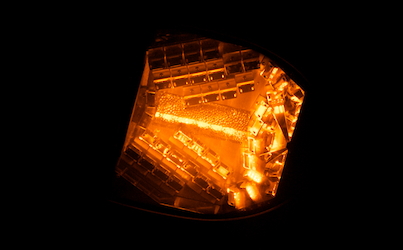
In an attempt to provide "natural" lighting, some fixtures have two lights, 90% LPS and 10% white LED:
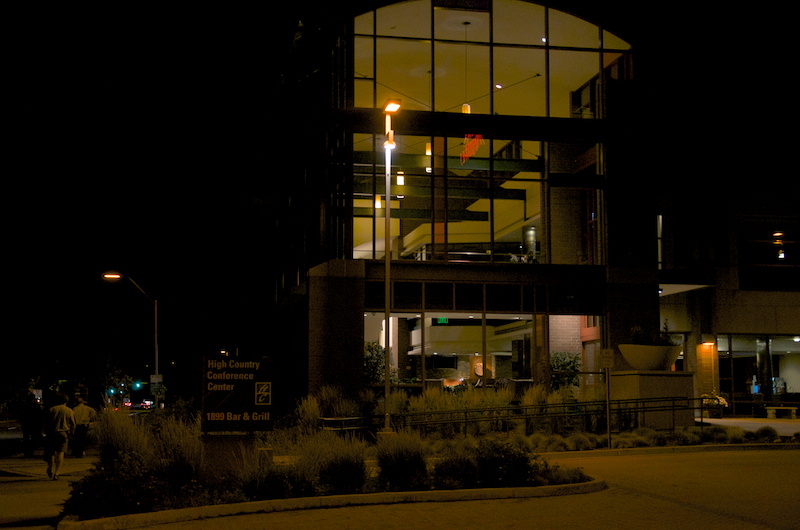
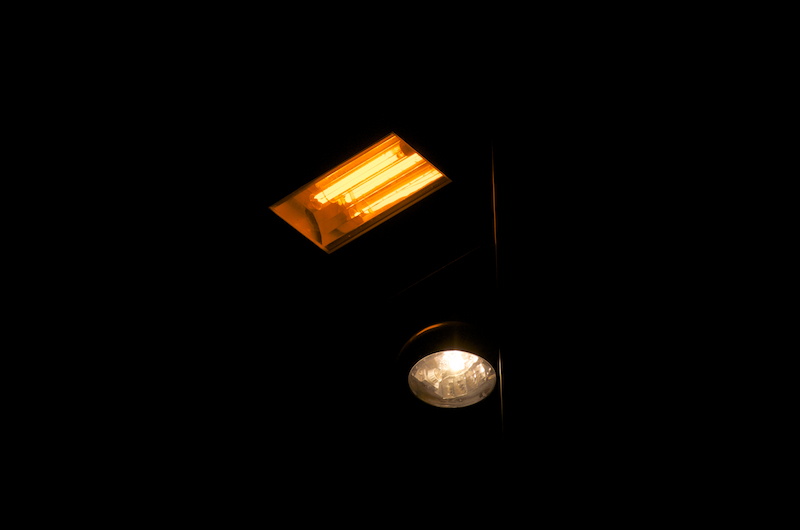
The tour of Flagstaff's lighting was a very effective demonstration of the various types of light sources available today.
Day 3, Wednesday, 20 August 2014
The final day of the conference continued discussions by the attendees, with the goal of preparing recommendations for dark sky lighting implementations to mitigate the Artificial Light at Night (ALAN) problem. Not only does light at night affect the night sky quality, impacting astronomy and enjoyment of this natural resource, but it also impacts human and wildlife health, the environment, and our economy. Attendees learned about new medical research in the human Circadian System that shows a connection between cancers (breast and prostrate), obesity, blood pressure, Alzheimer's Disease, and Parkinson's Disease. The Keystone Center facilitators of the conference will be preparing a final report containing the conference recommendations and will make the report available.
This conference brought together many very knowledgeable professionals and responsible organizations. It was very successful and worthwhile, and I learned a lot. It was an honor for me to represent Arizona State Parks and the Oracle Dark Skies Committee.
The next page contains photos of most of the displays and tables that were at the conference.
Comments are welcome using Email. If you are on Twitter you can use the button below to tweet this report to your followers. Thanks.
Cassiopeia Observatory Home Page
Copyright ©2014 Michael L. Weasner / mweasner@me.com
URL = http://www.weasner.com/co/Reports/2014/08/DSET/index2.html
